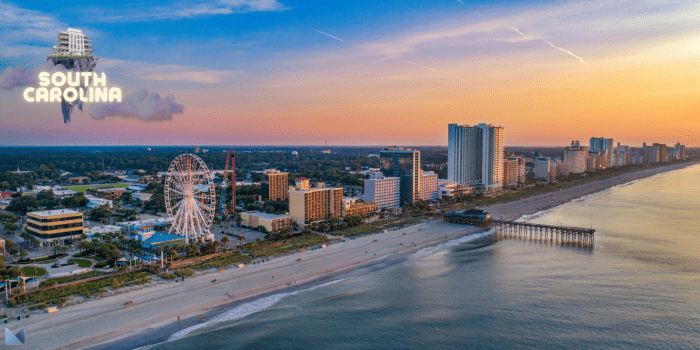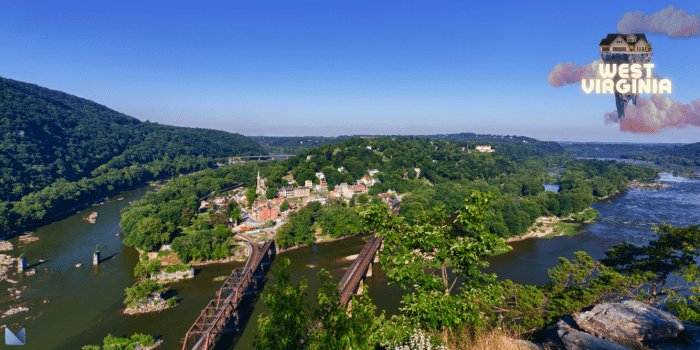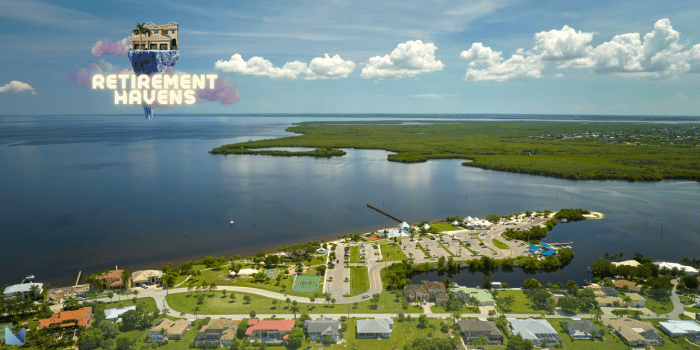
Where are People Moving to in 2024?
Our analysis of moving patterns in 2023 and predictions for 2024 reveals a return back to normal moving patterns. Americans are looking to move to great-value destinations around vibrant metro areas in the Southeast and Mid-Atlantic regions for 2023 and into 2024.
New moveBuddha Migration Report Reveals Where People Moved in 2023 and are Headed to in 2024
Are you moving to South Carolina this year?
Every year, people want to know where the most popular destinations are for people to move to.
In our 3rd annual migration report, we look back on the past year and analyze half a million searches in our moving cost estimator tool. Unlike Census data, which is often months or a year old, this data is forward-looking and pulls data of where people are planning to move, how large their moves are, when they’re moving, and how far they’re going. From this we pull out the high-level insights at the state and city level, using statistically significant inferences.
Here’s what we found in 2023 and what that hints for 2024 and beyond.
Key Findings
- South Carolina is the most popular state to move to in 2023, boasting an in-to-out move ratio of 2.1, meaning twice as many moves are coming into the state than headed out. Plus it earns the highest net searches per capita of all the states.
- Rising up: West Virginia saw the highest percentage increase in mover search interest, with a percentage change of +60% from 2022 to 2023.
- States known for affordability and boasting mountain terrains saw major interest from movers, including South Carolina, Montana, North Carolina, Colorado, Tennessee, and Maine.
- #1 move-to city, The Villages: Florida’s famous retirement community saw a move-in-to-out ratio of 375 moves in for every 100 out in 2023. Other top move-to cities include #2 Myrtle Beach (SC), #3 Asheville (NC), #4 Ocala (FL), and #5 Summerville (SC).
- Big city moves: Of cities with a population of at least 500K, Charlotte (NC), Denver (CO), Nashville (TN), New York (NY), and Jacksonville (FL) saw the highest ratio of moves in vs. out.
I. State-to-state moves, what changed in 2023?
II. Which states were more popular to move to in 2023 than 2022?
III. Which states saw the highest net search volume per capita?
IV. Which cities were the most popular to move to in 2023?
V. Which big cities were the most popular to move to in 2023?
I. New move-to destinations and hotspots emerge

Since 2020, the general theme of U.S. migration patterns has been an accelerated shift to the South and Sunbelt, an exodus from the Northeast and California, and Americans’ search for more affordable locales.
Many of these themes continued in 2023, but the movement to more affordable areas has increased. This is partly because housing has become increasingly unaffordable in many states and cities, particularly in states and cities that saw massive growth directly in response to the pandemic.
States like Texas and Florida, super-stars of the early pandemic, have cooled in popularity because real estate prices have risen.
Meanwhile, Americans looking to move were eyeing states like South Carolina, North Carolina, and Tennessee.
The cost of living in these states is still relatively low. But as is usually the case, increased popularity eventually leads to higher prices.
| States with the highest ratio of moves in-to-out | States with the lowest ratio of moves in-to-out |
| South Carolina — 211 in to 100 out | Pennsylvania — 85 in to 100 out |
| Hawaii — 191 in to 100 out | Nebraska — 83 in to 100 out |
| Montana — 187 in to 100 out | Louisiana — 81 in to 100 out |
| Alaska — 180 in to 100 out | Massachusetts — 81 in to 100 out |
| North Carolina — 176 in to 100 out | Illinois — 80 in to 100 out |
| Tennessee — 162 in to 100 out | Ohio — 79 in to 100 out |
| West Virginia — 162 in to 100 out | Maryland — 78 in to 100 out |
| Maine — 150 in to 100 out | Connecticut — 75 in to 100 out |
| Arkansas — 149 in to 100 out | New Jersey — 64 in to 100 out |
| South Dakota — 144 in to 100 out | California — 53 in to 100 out |
Overall, moving activity cooled in 2023. There were fewer bright spots of inflow surges and a broadening of interest across the states.
Various studies confirm that Americans are moving less than ever before. According to a data analysis by the National Association of Realtors, the U.S. moving rate has declined overall in the past six years.
For people still moving, remote work may still be a factor in location-independent Americans’ searches.
The rate of remote work in U.S. households is the lowest it’s been since the pandemic started, according to the U.S. Census Bureau. But the rate is still much higher than it was in pre-pandemic times.
Freedom from the office may still enable Americans to broaden their searches for states and cities with a high quality of life, a reasonable cost of living, and where they think they can thrive in 2023 and beyond, no matter what.
II. States of Nature: Comparing interstate moves from 2022 to 2023

Which states are rising in popularity, and which are losing out?
We looked at the ratio of in-moves to out-moves this year compared to 2022 and saw that West Virginia is one of the top states attracting a surge of interest in moves from out of state. Why? Following the trend to affordable destinations, homes in West Virginia remain much cheaper than the average home value in the United States.
How we did it: We took the in-to-out ratios from 2022 and 2023 and found the percentage change in ratio from year to year.
West Virginia Example:
2022 in-to-out ratio: 1.02
2023 in-to-out ratio: 1.62
Ratio change from year to year: 1.02 – 1.62 = +0.60
0.60 x 100 = +60% change from 2022 to 2023
The hottest places that saw the most influx in the past few years, including Montana, Texas, and Florida, continue to cool down.
All these states continue to see high inflow from out of state, just less so than early on in the pandemic — victims of their incredible success and the subsequent skyrocketing local real estate.
Related: Best Interstate Moving Companies
West Virginia ascends with an unexpected surge of move-in interest in 2023
moveBuddha data found that searches for moves to West Virginia jumped from 2022 to 2023. The move ratio jumped 60 percentage points year over year.
What’s the draw?
Many people moving to West Virginia are either doing so for retirement or the cheap cost of living.
West Virginia has also made efforts since the pandemic to attract remote workers to the state with Ascend WV program. The program was established by an ex-Silicon Valley CEO and awards remote workers who choose to move with $12,000, access to free outdoor adventuring, and coworking space, and more.
(More) affordable states grow in popularity, and New York state too?
Other states that attracted more interest from movers in 2023 than in 2022 are Nevada, New York, South Carolina, and Delaware.
Nevada’s popularity in search interest, according to moveBuddha data, spiked by 20% between 2022 and 2023. Moves may be headed to Nevada as Californians seek more affordable pastures (homes in Nevada are about 42% less expensive than in California). However, the surge in migration has led to rising housing prices in The Silver State.
In the Northeast, Delaware was a surprising rising star in 2023. Search interest in Delaware between 2022 and 2023 increased by 14%, according to moveBuddha’s data. With famously low taxes, affordable housing, a strong job market, and proximity to big urban centers like Philadelphia and Washington, D.C. — perhaps we shouldn’t be so surprised.
Defying the overall trend, New York landed among the states where moving search demand is rising. Even with fewer NY-state locals looking to move out, and more looking to move in than in 2022 — the numbers still show that there still more moves exiting the state than coming in. The state suffered a net population loss of 244,000 people in 2022, despite more people moving to NY than any year over the last decade.
New York always makes a comeback, but this one may take some time.
Pandemic hotspots Texas, Florida, and Montana still hot, but cooling off
Many states seeing decreased interest are those that have cooled off from recent sky-high popularity. These states include Texas, Florida, and Montana. All three are still seeing high numbers of in-moves from out of state, but just less robust than the year before.
Search interest for moves to the Lone Star State decreased 18% year-over-year from 2022, according to moveBuddha data. One issue could be that local real estate prices have surged and priced some people out.
Take the case of Austin. The median home value for all homes has risen in Austin by about 50% in the past five years. That’s even accounting for a recent drop in home values of about 9% from last year, with area homes costing about $530,990 (Zillow ZHVI, November 2023).
Meanwhile, in Florida, the ratio of searchers for moves in vs. out fell 34% from 2022 to 2023, according to moveBuddha’s data. The decrease has less to do with the state’s popularity and more with the incredible inflow of moves from out of state in recent years. Florida was the fastest-growing state last year, with a population that grew 1.91% between 2021 and 2022 (Census).
Montana is another state that saw a significant drop in search interest in 2023, with the volume down 16%, according to moveBuddha. Montana is still popular, with the state seeing nearly two times more moves in than out — with 187 searches for moves in for every 100 out.
III. Which states felt the power of new residents in 2023?

If we judged America’s moving patterns by net moves alone, we’d see the biggest states bid hello and goodbye to the largest numbers of people. They’d top our lists, and states with low populations would generally get overlooked. But when relatively small numbers of people descend on tiny states, the effects can be drastic.
We wanted to know where moves are making the locals sit up and take notice.
In order to understand which states are feeling the influx most, we looked at the volume of moves in or outbound compared to the state’s overall population.
This table shows the top and bottom 10 by greatest proportion of net migration inflow relative to a state’s original population (all states as well as Washington D.C. are included in this analysis)
| Top-ranking states by net inflow per capita in 2023: | Bottom-ranking states by net inflow per capita in 2023: |
| 1. South Carolina | 51. California |
| 2. Montana | 50. New Jersey |
| 3. North Carolina | 49. Connecticut |
| 4. Alaska | 48. Massachusetts |
| 5. Colorado | 47. Maryland |
| 6. Tennessee | 46. Illinois |
| 7. Maine | 45. Ohio |
| 8. Hawaii | 44. Utah |
| 9. Nevada | 43. Nebraska |
| 10. Idaho | 42. Pennsylvania |
Less-populous mountain states feel the weight of new in-moves
Mountain regions were moving hotspots in 2023, with movers flocking to mountainous ranges across the nation.
Over in the Blue Ridge Mountains, #1 South Carolina saw the most net searches for moves in per capita at 50 per 100,000 residents. The state’s beaches are also a draw, especially for retirees. Overall the state’s lower cost of living, mild weather, and cheaper housing are also attracting newcomers. The same could be said of #3 ranked North Carolina, which had 40 net searches for moves in per 100,000 residents, according to moveBuddha data.
#2 Montana, with net search inflow of 44 per 100,000 residents wasn’t as popular in 2023 as in 2022, but the appeal of Big Sky Country is still a draw for Americans. The state’s beautiful scenery, low population density, and numerous outdoor recreation opportunities keep drawing in new residents.
Over in the Great Smokies, #6 Tennessee saw 30 move-in searches per 100,000 residents. Much of this migration inflow to Tennessee is centered in the middle of the state around Nashville, including fast-growing wealthy suburbs like Franklin. But rural counties in the Volunteer State have also seen a population uptick, according to the Tennessee State Data Center.
Colorado, #5 saw the fifth most net searches per capita. According to some reports, Californians and Texans have been attracted to the Rocky Mountain state the most in recent years. But the biggest group of new Colorado residents has actually been foreign immigrants. Nearly 33,500 of an estimated 264,500 people who moved to Colorado in 2022 were from another country.
Fleeing the high cost of living in California, New Jersey, Connecticut, and Massachusetts
The states seeing the lowest search volumes per capita in 2023 are primarily ones where the cost of living has become unreasonably high.
California was dead last in search volume per 100,000 residents at -34.0. Expensive housing is driving many people away from the Golden State, but other reasons include rising crime and homelessness. California’s housing crisis has made it the epicenter of the nation’s homelessness issues, with 30% of all Americans experiencing homelessness living in the state.
New Jersey, Connecticut, and Massachusetts are also at the bottom of states in search volume per 100,000 residents. Much of this also likely concerns the rising cost of living in these Northeastern states.
New Jersey’s cost of living is 13% higher than the national average, while housing is 31% higher than average. Even basic necessities like clothing and groceries are 4% higher than the national average in the Garden State.
Related: Find Local Moving Companies
IV. Which cities are people flocking to and fleeing the most?

We looked at city moving data for the U.S. cities, which saw a minimum of 100 inbound and outbound queries this year, to see which cities are seeing droves of new moves.
Of the 284 cities on our list, which gained the highest proportion of new moves and which lost the most in 2023?
Southern cities and retirement havens are the top move-to cities
Nearly all of America’s most popular destination cities in 2023 are in the South.
The Villages, FL, was by far the most popular, with an in-to-out ratio of 3.75, meaning for every 375 moves in, there were only 100 headed out.
The popularity of the retirement community, The Villages, FL, should come as no surprise. Sumter County was the nation’s fastest-growing county between 2010 and 2020 because of The Villages, according to census data.
Other popular cities were Myrtle Beach, SC; Asheville, NC; Ocala, FL; and Summerville, SC.
Overall, the top 10 highest-inflow cities in 2023 were all in Florida, South Carolina, North Carolina, and Tennessee.
The dominance of Southern cities in the top 25 list of high-inflow cities in 2023, according to moveBuddha data, is something to behold. The only non-Southern region cities to make the top 25 were Millersville, MD; Boulder, CO; and Honolulu, HI.
| Most Moved to Rank | City, State | Moves In-to-Out |
| 1 | The Villages, Florida | 375 in to 100 out |
| 2 | Myrtle Beach, South Carolina | 282 in to 100 out |
| 3 | Asheville, North Carolina | 280 in to 100 out |
| 4 | Ocala, Florida | 276 in to 100 out |
| 5 | Summerville, South Carolina | 233 in to 100 out |
| 6 | Greenville, South Carolina | 232 in to 100 out |
| 7 | Saint Augustine, Florida | 213 in to 100 out |
| 8 | Franklin, Tennessee | 211 in to 100 out |
| 9 | Pensacola, Florida | 203 in to 100 out |
| 10 | Wilmington, North Carolina | 202 in to 100 out |
| 11 | Zephyrhills, Florida | 198 in to 100 out |
| 12 | Eagle Rock, North Carolina | 196 in to 100 out |
| 13 | Honolulu, Hawaii | 195 in to 100 out |
| 14 | Chattanooga, Tennessee | 192 in to 100 out |
| 15 | Millersville, Maryland | 190 in to 100 out |
| 16 | Miami Beach, Florida | 187 in to 100 out |
| 17 | Cary, North Carolina | 184 in to 100 out |
| 18 | Boulder, Colorado | 183 in to 100 out |
| 19 | Duluth, Georgia | 178 in to 100 out |
| 20 | Charleston, South Carolina | 177 in to 100 out |
| 21 | Knoxville, Tennessee | 176 in to 100 out |
| 22 | Frisco, Texas | 172 in to 100 out |
| 23 | Clermont, Florida | 172 in to 100 out |
| 24 | Kissimmee, Florida | 170 in to 100 out |
| 25 | Lakeland, Florida | 170 in to 100 out |
Escape from California continues
California’s migration struggles continued in 2023. Fifteen of the top 25 cities with the highest outflow in 2023 were in the Golden State, according to moveBuddha data.
The California cities that fared the worst were #1 Anaheim, #3 Bakersfield, #4 Oakland, #7 Huntington Beach, and #8 Pasadena.
Anaheim’s in-to-out ratio in 2023 was just 0.41, meaning for every 41 people searching for moves in, another 100 people were looking for a way out.
California’s population has shrunk by half a million in the past two years. The high cost of living is cited as a primary reason for the exodus. You can look at most California cities among the top 25 and see costly housing prices.
#1 Anaheim, CA is one example. According to Zillow, the median home value there is $844,175, up 3% since last year. In #8 Pasadena, CA the median home value, according to Zillow, is nearly $1.1 million.
Other than California, the top 25 highest outflow cities in 2023 were a mixed geographic bag of places where either the cost of living is too high or ones that just aren’t strong draws for Americans’ moving interest. These cities include #2 Bothell, WA; #6 Stamford, CT; and #15 Athens, GA.
| Least Moved to Rank | City, State | Moves In-to-Out |
| 1 | Anaheim, California | 41 in to 100 out |
| 2 | Bothell, Washington | 44 in to 100 out |
| 3 | Bakersfield, California | 47 in to 100 out |
| 4 | Oakland, California | 48 in to 100 out |
| 5 | Bronx, New York | 49 in to 100 out |
| 6 | Stamford, Connecticut | 51 in to 100 out |
| 7 | Huntington Beach, California | 52 in to 100 out |
| 8 | Pasadena, California | 54 in to 100 out |
| 9 | San Mateo, California | 56 in to 100 out |
| 10 | Fresno, California | 56 in to 100 out |
| 11 | San Jose, California | 57 in to 100 out |
| 12 | Sunnyvale, California | 57 in to 100 out |
| 13 | Riverside, California | 58 in to 100 out |
| 14 | Pompano Beach, Florida | 59 in to 100 out |
| 15 | Athens, Georgia | 60 in to 100 out |
| 16 | Oceanside, California | 61 in to 100 out |
| 17 | Peoria, Arizona | 62 in to 100 out |
| 18 | Santa Barbara, California | 62 in to 100 out |
| 19 | Columbus, Ohio | 63 in to 100 out |
| 20 | Carlsbad, California | 64 in to 100 out |
| 21 | Santa Rosa, California | 66 in to 100 out |
| 22 | Rockville, Maryland | 66 in to 100 out |
| 23 | San Francisco, California | 67 in to 100 out |
| 24 | Memphis, Tennessee | 67 in to 100 out |
| 25 | Redmond, Washington | 68 in to 100 out |
V. Which big cities are attracting movers the most?

The pandemic emptied big urban downtowns and sent newly remote-working Americans fleeing to more spacious locales.
Now that the pandemic is behind us, some big U.S. cities are slowly making a comeback.
Which of the nation’s 40 biggest cities were most attractive to movers in 2023?
Leading the pack is #1 Charlotte, NC, which boasted a 1.68 in-to-out ratio in 2023. Other large cities that fared well in 2023 were #2 Denver, CO; #3 Nashville, TN; and #4 New York, NY, tied with #4 Jacksonville, FL.
About 113 people moved to the Charlotte metro region every day between mid-2021 and mid-2022, and that inflow hasn’t slowed down. The top reasons are a lower cost of living, relatively affordable housing, and a strong job market that’s home to two of the nation’s biggest banks.
New York City’s climb continues, with The Big Apple tied for #4 with Florida’s biggest city, Jacksonville. A recent report predicts New York City’s migration will be fully recovered and back on course with pre-pandemic trends within the following year. New York City is far from dead, as some predicted. Over in sunny Florida, where moves continue to flow, the state’s biggest city is neck and neck for in-moves with NYC. More affordable than Miami, yet still with plenty of sunshine and beachfront, it’s no big surprise to us that Jacksonville is one of the top move-to cities.
California dominated the list of the biggest cities, seeing the least popularity in 2023. Five of the top 10 large U.S. metropolitan areas seeing the worst in-to-out ratio, according to moveBuddha data, were in the Golden State, including Fresno, San Jose, San Francisco, Los Angeles, and San Diego.
Key Summary: Americans search for mild weather & affordability
Americans continued searching for greener pastures in 2023, which mainly meant finding states and cities where their dollar could go further.
That meant more resident outflow from expensive states like California into more reasonably priced regions like the South.
The Carolinas emerged as the top super-star states for migration in 2023, leaving behind early-pandemic favorites like Texas and Florida.
Regarding cities, Americans continued to flock to smaller metros with milder climates and a lower cost of living, such as “The Boomer Paradise” of The Villages, Florida; Myrtle Beach, South Carolina; and Asheville, North Carolina.
The pandemic’s effects on big urban areas have also started to subside. While some large cities like San Francisco, Chicago, and Los Angeles continued to struggle in 2023, other big cities saw a comeback.
Moving patterns will inevitably shift again this upcoming year, and new hotspots will emerge. Whether searching for a new retirement home, a job relocation, or being closer to family, Americans are always on the move.
Going Deeper: Macro Trends – AI, Housing and The Fourth Turning
Is the “Fourth Turning” upon us?
In 1997, authors Howe and Strauss prophesied the fourth part of an 80-100 year super cycle, with the current one upon us now:
“Sometime before the year 2025, America will pass through a great gate in history, commensurate with the American Revolution, Civil War, and twin emergencies of the Great Depression and World War II.”
With geopolitical events heating up in Eastern Europe, the Middle East, and South China Sea, there are some spooky hints that there could be some truth to this framework.
Add to that the new breakthrough generative AI technologies, global internet anywhere via Starlink, drone warfare, and sometimes all of those combined into one sequence.
The housing shortage continues to affect cities across the U.S. while birthrates continue to decline. The future is bright, but also very uncertain.
Methodology
The data used in this report comes directly from moveBuddha’s Moving Cost Calculator.
This analysis takes into account searches made in 2022 (Jan 1 to Dec 31) and 2023 (Jan 1 to Dec 4).
Calculations used in this analysis include:
In-to-Out Ratio In-to-Out = Count of Inbound Moves / Count of Outbound Moves
Ratios >1 indicate more inflow than outflow.
Ratios <1 indicate more outflow than inflow.
The in-to-out ratio is the proportion of inbound vs. outbound moves for a city or state over the course of a calendar year.
Ex: Montana in 2022 had a net migration ratio of 2.04 (also expressed as 204) meaning that for every 204 inbound moves, 100 moved out. In 2023 that ratio decreased to 1.87 (also expressed as 187) meaning that for every 187 inbound moves, 100 moved out.
Ratio change: Year-over-year percentage change
Percent Change in Ratio: In-to-Out Ratio 2022 / In-to-Out Ratio 2023 Calculations based on year-to-year change in migration were derived using the net migration ratio. This same method has also been used by LinkedIn data scientists and Bloomberg.
A YoY percent change >0 indicates that there was an increase in the ratio of inflow from one year to the next.
A YoY percent change <0 indicates that there was a decrease in the ratio of inflow from one year to the next.
Net moves per capita:
State net inflow (inflow minus outflow) divided by the state population.

